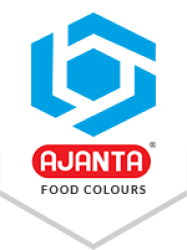_1730465008.jpg)
In the world of color additives, there are many types of colours that manufacturers use in their products to make them attractive and appealing including lake colours, dyes, and pigments. Each colourant has its own properties which make them suitable for use in a wide range of products such as food, cosmetics, pharmaceuticals, animal feed, personal and household care products and other industries. In this article, we will explore the key difference between these colorants to help you understand which colourant is right for your products.
What are Lake Colours?
A lake colour is produced through a process on which FD&C dyes are mixed with some metallic substances such as alumina hydrate, calcium, or barium salts. This process results in a colourant their nature is soluble in fats and oils or low-moisture applications but not soluble in water-based substances. This makes lake colours versatile for a range of products where dyes are not suitable like baked goods, candies, and icing, as well as in some cosmetic products such as lipsticks and eye shadows. The ability of lake colors to disperse in oils allows them to deliver consistent coloring across various product formulations.
What are Dyes?
Dyes are water-soluble colourants that dissolve in water and provide an appealing and vibrant appearance to products. Usually, they are solid powders that are soluble in water, oils, alcohols and other liquid solvents where colours solubility plays a crucial role. However, dyes are not an ideal option for products where water exposure can lead to color bleeding or migration.
What are Pigments?
A pigment is a material that does not dissolve but will disperse. Pigments are primarily used to import colours into different types of materials by physical mixing rather than dissolving. Pigments can be organic like yellow 1, green 7 and carbon black, or inorganic like titanium dioxide and iron oxides depending on their extraction. Pigments provide the best stability and consistency under various pH levels or light exposures which makes them an ideal option for use in a wide range of products including paints, inks, plastics, cosmetics, soaps, and body products.
Key Differences Between Lake Colours, Dyes, and Pigments
Solubility
Lake Colours: Water-insoluble but oil-dispersible makes them perfect for products that are rich in fat or oil or have low moisture content.
Dyes: Dissolved in water and used when the color has to be evenly incorporated such as products based on water.
Pigments: Is chemically defined to be odourless, insoluble in oil, insoluble in water, and the particles provide colour when dispersed in a medium.
Application
Lake Colours: Suitable for the food industry such as baking or confectionery and as cosmetics where it is intended to be used when oil is dispersed in water.
Dyes: Used in beverages or syrups that are clear or transparent as they are water-soluble and it is advantageous when it dissolves completely.
Pigments: Resilient for colour application in paints, coatings, and cosmetics that require high opacity and the colour remains stable
Stability
Lake Colours: The pigments are stable in moderate concentrations in products that call for oil soluble colorants connecting microbicidal to regions of constant concentration
Dyes: These are some of the least stable of all colorants and are easily faded by light, pH, or even heat within a moderate range.
Pigments: Non-leaking colour due to extreme resistance to environmental conditions and are stable for a long time without exposure to any conditions.
Opacity
Lake Colours: Impart medium opacity and can be recommended for use to tint collections by altering the concentration of them.
Dyes: Generally colourless and transparent because the pigments easily dissolve in water and thus do not form opaque colors.
Pigments: Completely opaque and are suitable for uses where solid coverage is needed.
Choosing the Right Colourant for Your Needs
You can choose between lake colours, dyes, and pigments depending largely on the product’s formulation, intended use, and desired effect. Lake colors are versatile and suitable for a range of products that require oil-based colour dispersion such as chocolates, fatty confectionery, or cosmetics. Dyes have a water-soluble nature which excels in transparent liquid products, while pigments provide an ideal solution for items that need stable and opaque colour.
Manufacturers can benefit from having a wide selection of colourants that are available to meet their various requirements across different applications. High-quality lake colours, dyes, and pigments are essential for achieving the desired aesthetic appeal and consistency in products. Working with a reliable colourant manufacturer helps maintain quality standards and comply with regulatory requirements.
Finding the Right Supplier for Lake Colours, Dyes, and Pigments
While selecting a supplier for lake colours, dyes, or pigments you should look for companies that have a proven track record of providing high-quality colorants that comply with all the industry standards. Reliable suppliers should offer a range of shades and formulations, as well as customization options to suit specific product needs.
Ajanta Food Colours is an example of a company that specializes in manufacturing lake colours, dyes, and pigments, offering solutions for various industries, including food, cosmetics, and pharmaceuticals. As a well-established pigment manufacturer and food colour supplier, Ajanta Food Colours ensures that its products meet stringent quality and safety standards.
Conclusion
Understanding the distinctions between lake colours, dyes, and pigments is essential for choosing the right type of colorant for your products. Whether you need oil-dispersible lake colors for baked goods, water-soluble dyes for beverages, or stable pigments for cosmetics, selecting the correct colourant ensures the final product meets your quality and performance expectations.
By considering factors like solubility, stability, opacity, and regulatory compliance, manufacturers can make informed decisions and deliver products with consistent and vibrant colour. Choosing a reputable pigment manufacturer or lake colour supplier is key to achieving the desired results while meeting industry standards.




